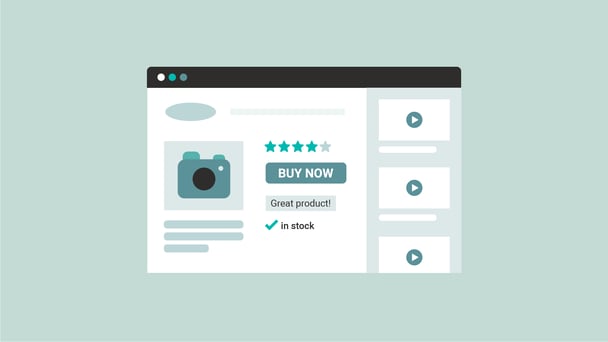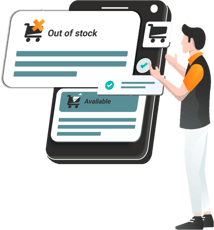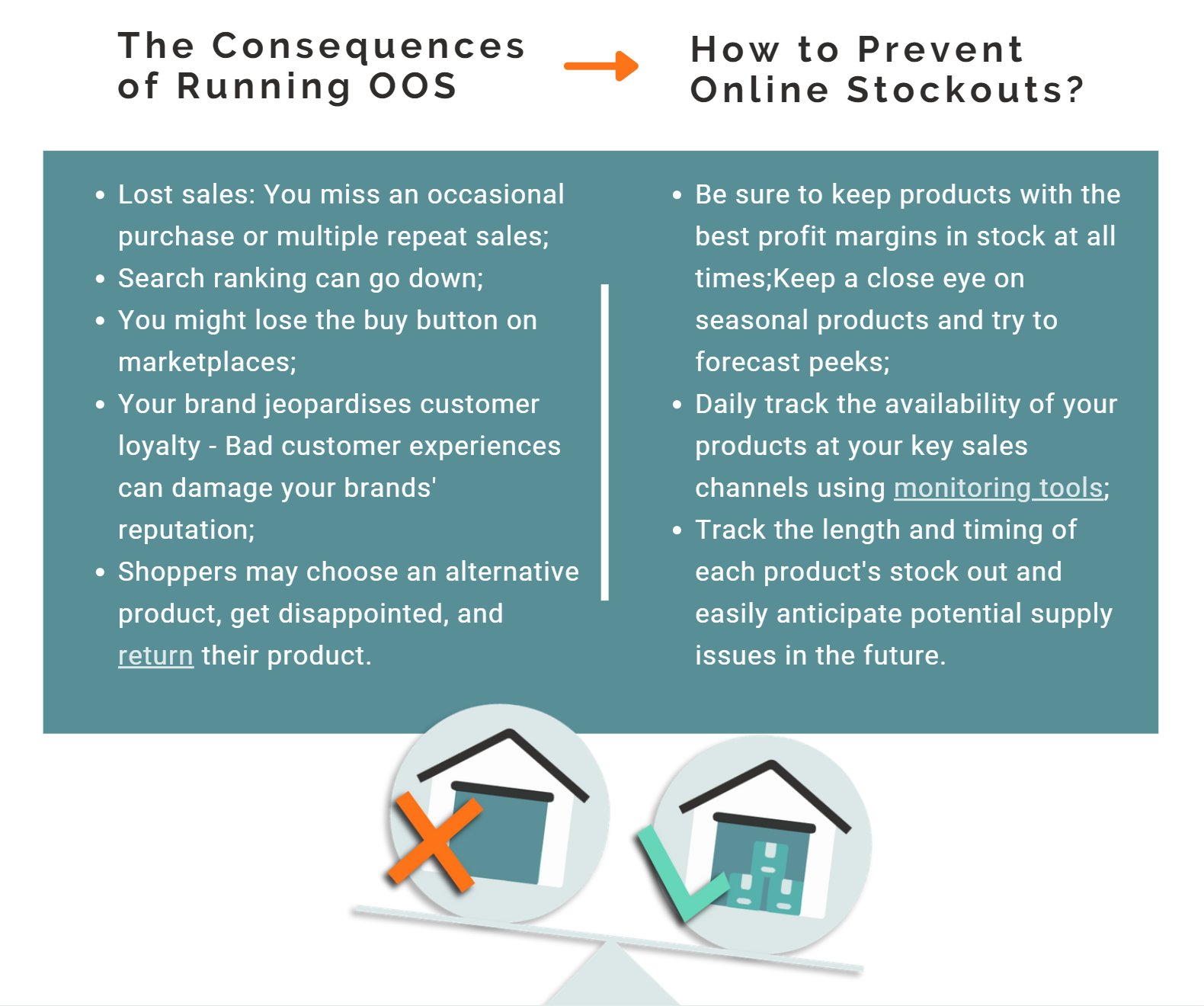This is part 1 of my triptych blog series about 'optimizing the digital shelf'. I will touch on the importance of stock availability for brands and prevent stockouts on the Digital Shelf. In part 2 I will discuss Optimizing Product Content On The Digital Shel and in part 3: Monitoring Product Reviews On The Digital Shelf.
The increase of online shoppers is a development set in motion by the pandemic, but it looks like it’s here to stay. What the enormous growth of purchases on the digital shelf entails is a growth of online competition. Getting and keeping your products standing out on the digital shelf is more challenging than ever.
You should keep in mind that a product that can’t be found or is not available online will not sell. Simple as that. Do not underestimate the negative consequences it can have for your brand in the short and long run!
What is The Digital Shelf?
The digital shelf is where a brand is presented online, and shoppers discover, research, and buy its products. Multiply the number of products in your brand portfolios with eCommerce channels you are selling on, and you will have the number of touchpoints on the digital shelf.
Whereas in a brick-and-mortar store, a shopper picks up a product, feels it, and takes a good look at it, and can talk to a sales representative on the floor, digital stores have to give equivalent and excellent shopping experiences on the digital shelves through:
- Competitive and stable product prices;
- Constant stock availability;
- Excellent product content such as images, videos, and other product information on product detail pages;
- Making it easy to find products.
To take control of your brand online, Digital Shelf Monitoring & Analytics is essential to winning.

Running Out-Of-Stock On The Digital Shelf
When an online shopper wants your product, and that product turns out to be Out-Of-Stock (OOS), what does he do? Chances are he'll look for a competitor with available stock, an alternative product, or he doesn't buy a product at all. In any case, it negatively influences the experience he has with your brand, and you directly miss out on sales.
What are the consequences of running out of stock?
- Search Rankings will go down: When your assortment is often out of stock and competitors can keep a steady stock level, your search ranking will go down, and you give your rival free rein to conquer those top 3 positions on the digital shelf. That's a pity because we all know it's not easy to crawl back up again.
- Issues on Marketplaces occur: When running Out-Of-Stock on marketplaces, your product most probably loses the buy box to a 3P seller. When out-of-stock events occur frequently, a marketplace can put you on a list of underperforming sellers. This then results in you losing the buy-box, a low search ranking, and lower sales numbers, and in the end, it could even lead to delisting by that marketplace.
- Jeopardize Customer Loyalty: According to a McKinsey study in March 2020, one of the biggest drivers for abandoning brand loyalty during the shutdown was items being out of stock. When running out of stock, you're not only disappointing shoppers in the short run but jeopardizing customer loyalty. It's more than one single sales opportunity. If someone has been a loyal customer for many years but switches to another brand because your product is out of stock, you put that person's loyalty at stake, plus losing years of likely sales in the future.

How to Minimize Online Stockouts?
- Start with defining your core portfolio. I can imagine that your cash cows and stars, products with high-profit margins, newly introduced products, or products your brand is famous for are the ones you want to keep an eye on closely since they will have the most negative effect on your brand and profits when running out of stock.
- Track daily if your defined core portfolio products are listed and available, there where they should be, using Digital Shelf Analytics tools. Automatically monitor availability on all your sales channels and anticipate availability issues and when they might occur. This way, you do no longer need to check product pages manually. That will save you and your team much time.
- With the right data and insights into the availability of your products over time, you can predict specific patterns and talk to resellers about how to optimally manage your inventory. Both you and your resellers will benefit from protecting your search rankings and customer loyalty and avoiding lost sales. A win-win!

Digital Shelf Monitoring & Analytics is essential to winning. Download the Free Guide to Digital Shelf Optimization now!
.png?width=680&name=Guide%20Digital%20Shelf%20Optimisation%20-%20LinkedIn%20Ads%20Graphic%20(4).png)